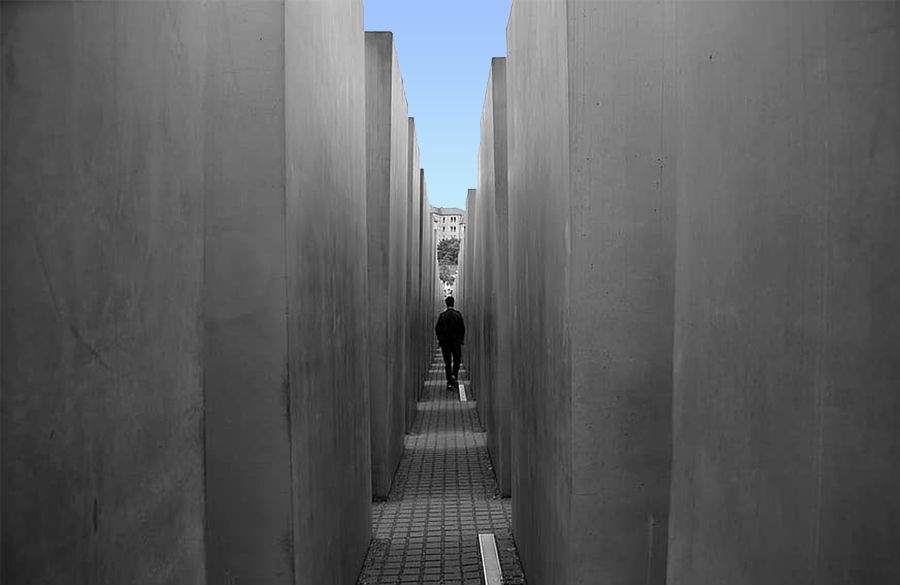How Does Architecture Influence The Perception Of Space And Volume?

Architecture is often seen as just the design and building of structures. However, a critical aspect of architecture is spatial perception. Spatial perception refers to how individuals interpret and understand the space around them. This is a crucial concept that architects must consider when designing buildings. Spatial perception in architecture can have a significant impact on how people interact with their surroundings and how they feel in a particular space.
The Importance of Spatial Perception in Architecture
Spatial perception is essential in architecture for several reasons:
Effective Use of Space
Architects need to ensure that the spaces they design are functional and fulfill their intended purpose effectively. Spatial perception helps architects to understand how people will move and interact in a particular space and to design the space accordingly. This understanding can lead to more efficient use of space and a more functional building overall.
User Experience
The user experience is a critical consideration for architects. Spatial perception plays a crucial role in the user experience of a building. Understanding how individuals perceive and interpret space can help architects to create spaces that feel welcoming, comfortable, and intuitive to navigate. This can lead to a positive user experience, which is essential for the success of any building.
Aesthetic Design
Spatial perception is also essential in creating aesthetically pleasing designs. By understanding how people perceive space, architects can create designs that are visually appealing and engaging. This can contribute to the overall experience of the building and help to create a sense of unity between the building and its surroundings.
Factors that Influence Spatial Perception in Architecture
Several factors can influence spatial perception in architecture. These factors include:
Scale
The scale of a building can have a significant impact on spatial perception. Large buildings can create a sense of grandeur and awe, while smaller buildings can feel more intimate and cozy. Architects must consider the scale of a building when designing to ensure that it aligns with the intended purpose and user experience.
Proportion
Proportion refers to the relationship between different elements within a design. A building with good proportion is one where all the elements fit together in a pleasing way. Proportion can influence spatial perception by creating a sense of balance and harmony within a space.
Lighting
Lighting can also have a significant impact on spatial perception. Different types of lighting can create different moods and emotions, and good use of lighting can enhance the overall user experience of a building. Architects must consider lighting when designing to ensure that it complements the intended purpose and user experience of a space.
Materiality
The materials used in a building can also influence spatial perception. Different materials can create different textures, colors, and patterns, which can impact how people perceive and interact within a space. Architects must consider the materials used in a building when designing to ensure they align with the intended purpose and user experience.
Challenges of Spatial Perception in Architecture
While spatial perception is a critical aspect of architecture, it can also present challenges to architects. These challenges include:
Subjectivity
Spatial perception is subjective, meaning that individuals can interpret and understand space differently. This can make it challenging for architects to design spaces that are universally appealing and intuitive to navigate. Architects must consider the different perspectives of their audience when designing to create spaces that are accommodating and accessible to all.
Cultural Differences
Cultural differences can also impact spatial perception. Different cultures have different expectations and preferences regarding spatial design. Architects must consider cultural differences when designing to create spaces that are sensitive and accommodating to different audiences.
User Needs
User needs can also present a challenge to architects when designing spaces. Different users have different requirements and preferences regarding spatial design. Architects must consider user needs when designing to create spaces that align with the intended purpose and user experience.
Frequently Asked Questions (FAQs)
What is spatial perception?
Spatial perception refers to how individuals interpret and understand the space around them. In architecture, spatial perception is a critical aspect that architects must consider when designing buildings.
Why is spatial perception important in architecture?
Spatial perception is crucial in architecture for several reasons. These include effective use of space, user experience, and aesthetic design.
What factors influence spatial perception in architecture?
Several factors can influence spatial perception in architecture. These include scale, proportion, lighting, and materiality.
What are the challenges of spatial perception in architecture?
The challenges of spatial perception in architecture include subjectivity, cultural differences, and user needs.
What can architects do to address the challenges of spatial perception?
Architects can address the challenges of spatial perception by considering the different perspectives of their audience, cultural differences, and user needs. They can also use tools such as focus groups and user testing to gather feedback and improve their designs.
How can spatial perception improve the user experience of a building?
Spatial perception can improve the user experience of a building by creating spaces that are welcoming, comfortable, and intuitive to navigate. This can lead to a positive user experience and contribute to the overall success of the building.
What are some examples of buildings that effectively use spatial perception?
Some examples of buildings that effectively use spatial perception include the Guggenheim Museum in Bilbao, Spain, and the Sydney Opera House in Sydney, Australia. Both buildings have unique designs that effectively use spatial perception to create visually appealing and functional spaces.
Overall, spatial perception is a critical aspect of architecture that can have a significant impact on how people interact with and feel in a particular space. Architects must consider spatial perception when designing buildings to create functional, aesthetically pleasing, and inclusive spaces that align with the intended purpose and user experience.




Post a Comment for "How Does Architecture Influence The Perception Of Space And Volume?"